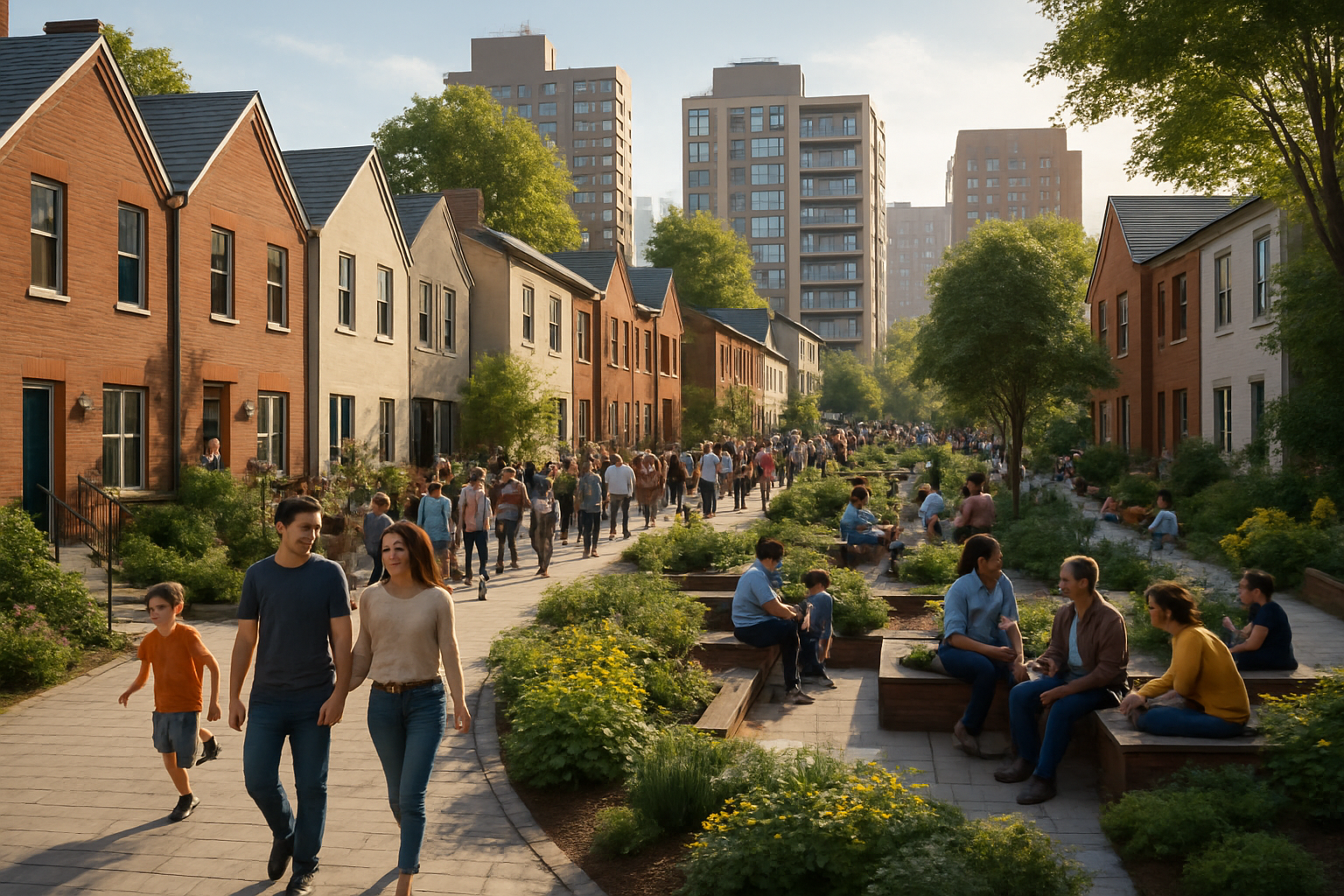Title: Micro-Neighborhoods: The New Frontier of Urban Connection
Introduction: In the sprawling landscape of modern cities, a fascinating trend is emerging: micro-neighborhoods. These hyper-local communities are reshaping urban living, fostering connection in an age of digital isolation. But what drives this shift, and how is it transforming our social fabric? Read below to explore the intriguing world of micro-neighborhoods and their impact on contemporary society.

Historically, neighborhoods have been defined by geographical boundaries or demographic similarities. However, micro-neighborhoods transcend these traditional definitions. They’re characterized by intentional community-building efforts, shared interests, and a strong sense of place. This shift represents a fascinating evolution in urban sociology, blending elements of traditional community structures with modern urban planning and social dynamics.
Drivers of the Micro-Neighborhood Movement
Several factors contribute to the growing popularity of micro-neighborhoods. Urbanization has led to increasing population density in cities, often resulting in a paradoxical sense of isolation amidst crowds. This phenomenon, coupled with the digitalization of social interactions, has created a yearning for tangible, local connections.
Moreover, the COVID-19 pandemic has accelerated this trend. Lockdowns and social distancing measures highlighted the importance of local support systems and the value of knowing one’s neighbors. As remote work becomes more prevalent, people are spending more time in their immediate surroundings, fostering a renewed interest in community engagement.
Environmental concerns also play a role. Micro-neighborhoods often emphasize walkability, local amenities, and shared resources, aligning with growing eco-consciousness and desires for sustainable urban living. This trend reflects a broader shift towards localism in various aspects of life, from food consumption to social interactions.
Social Dynamics in Micro-Neighborhoods
The social fabric of micro-neighborhoods is distinct from that of traditional urban areas. These communities often feature higher levels of social interaction, mutual support, and collective decision-making. Research shows that residents of micro-neighborhoods report higher levels of life satisfaction and a stronger sense of belonging compared to those in conventional urban settings.
One key aspect of micro-neighborhoods is the balance between privacy and community. Unlike communes or co-housing arrangements, micro-neighborhoods maintain individual private spaces while fostering shared experiences and responsibilities. This structure appeals to a wide range of demographics, from young professionals seeking connection to older adults looking to age in place with community support.
The social dynamics within these communities often lead to the development of informal support networks. Neighbors might share childcare responsibilities, organize skill-sharing workshops, or collaborate on community projects. This level of engagement creates a sense of collective identity and purpose, countering the anonymity often associated with urban living.
Design and Urban Planning Implications
The micro-neighborhood trend is influencing urban planning and architecture. Developers and city planners are increasingly incorporating design elements that facilitate community interaction. This includes creating central commons areas, designing homes with front porches facing shared spaces, and implementing traffic-calming measures to make streets more pedestrian-friendly.
Some cities are actively encouraging the development of micro-neighborhoods through zoning changes and urban renewal projects. For instance, Portland, Oregon’s Comprehensive Plan includes provisions for fostering 20-minute neighborhoods, where residents can meet most daily needs within a short walk or bike ride from home.
These design changes not only impact social dynamics but also have environmental and economic implications. Micro-neighborhoods often lead to reduced car dependency, increased support for local businesses, and more efficient use of urban space. As cities grapple with challenges like housing affordability and sustainability, micro-neighborhoods offer an innovative approach to urban development.
Challenges and Criticisms
While micro-neighborhoods offer many benefits, they’re not without challenges. Critics argue that these communities can lead to social exclusivity or gentrification, potentially exacerbating urban inequality. There’s a risk that micro-neighborhoods could become insular, creating divisions within larger urban areas.
Another concern is the potential for over-reliance on informal support networks, which might not be sustainable in the long term or accessible to all residents. There’s also the question of how micro-neighborhoods interact with broader city systems and governance structures.
Balancing the intimacy of micro-neighborhoods with the diversity and dynamism of larger urban environments remains a key challenge. As this trend evolves, urban planners and sociologists are closely monitoring its impacts on social cohesion, economic development, and urban governance.
Future Prospects and Societal Impact
The micro-neighborhood trend represents a significant shift in how we conceptualize urban living and community formation. As cities continue to grow and evolve, these hyper-local communities could play a crucial role in addressing issues of social isolation, environmental sustainability, and urban quality of life.
Looking ahead, the integration of technology with micro-neighborhood concepts presents intriguing possibilities. Smart city technologies could enhance community engagement and resource sharing within these small-scale networks. Meanwhile, the principles of micro-neighborhoods might influence virtual community-building efforts, bridging the gap between digital and physical social connections.
As society grapples with complex challenges like climate change, social polarization, and the changing nature of work, micro-neighborhoods offer a compelling model for reimagining urban life. They remind us of the power of local connections in an increasingly global world, suggesting that the future of cities might lie in looking back to the intimacy of village life while embracing the innovations of the 21st century.





